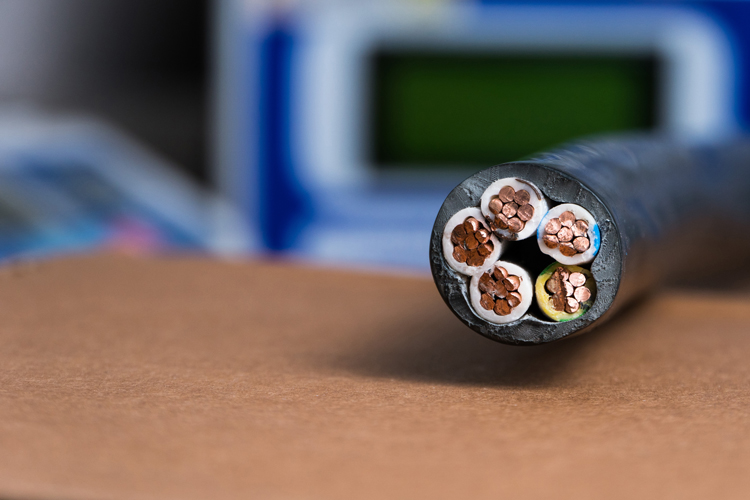
At Mercury Wire, our offering includes design, configuration, and manufacturing of custom wire and cable that meet your specific application requirements. Our extended capabilities include twisting and cabling of wire to help avoid electromagnetic interference and organize internal components into a final cable that is ready for termination.
Twisting
Wires are typically used to transmit signal using electrical current. By default, the flow of current generates an electromagnetic field of interference around the wire that creates noise the can impact signals being transmitted through surrounding wire and cable. In order to help eliminate this electromagnetic interference, the wire is twisted together to create a canceling effect. By twisting wires that carry an equal and opposite amount of current through them, the interference/noise produced by one wire is effectively canceled by the interference/noise produced by the other. A twisted pair also improves rejection of external electromagnetic interference from other equipment.
 Twisted pairs can be shielded or unshielded depending on the intended application. While both shielded twisted pair (STP) and unshielded twisted pair (UTP) have interference canceling capabilities, the way that each one is designed to cancel the interference is quite different. Interference caused by power lines, radar systems or other high-power electromagnetic signals can cause an imbalance in the current flowing through the shield or conductors of the cables which interferes with the signal. The metallic conducting shield encasing STP cables blocks out electromagnetic interference, allowing it to carry data at a faster rate of speed. STP cables are a good fit for use in industrial settings where large electronic equipment generates a significant amount of electromagnetic interference. In contrast, UTP cables are the most commonly used cables for ethernet connections and rely on the cancellation effect caused by the twisting of the wire pairs to handle noise, which is more than enough for most domestic uses.
Twisted pairs can be shielded or unshielded depending on the intended application. While both shielded twisted pair (STP) and unshielded twisted pair (UTP) have interference canceling capabilities, the way that each one is designed to cancel the interference is quite different. Interference caused by power lines, radar systems or other high-power electromagnetic signals can cause an imbalance in the current flowing through the shield or conductors of the cables which interferes with the signal. The metallic conducting shield encasing STP cables blocks out electromagnetic interference, allowing it to carry data at a faster rate of speed. STP cables are a good fit for use in industrial settings where large electronic equipment generates a significant amount of electromagnetic interference. In contrast, UTP cables are the most commonly used cables for ethernet connections and rely on the cancellation effect caused by the twisting of the wire pairs to handle noise, which is more than enough for most domestic uses.
Cabling
During the cabling operation, a series of insulated wires – including twisted pairs, fillers, and other components are drawn together in a twisted pattern to form a single cable bundle. In most cases, a shield is applied to the cable bundle to add strength and keep all components in place before the final jacketing operation.